
Mastering ESL: Unlock Your English Potential Today
998 views · Dec 13, 2024 pcweb.info
Learn how to unlock the power of English as a second language and open doors to endless opportunities! Discover essential tips, tools, and strategies for mastering ESL and transforming your future. #LearnEnglish #ESLSuccess #EnglishJourney

Allegory in Literature
11K views · Oct 29, 2024 pcweb.info
Allegory in Literature Why do some authors choose to disguise their true messages behind metaphorical masks, creating layers of meaning that provoke deeper thought? This is the essence of allegory in literature—where a seemingly straightforward narrative hides profound truths about life, society, or the human condition. Allegory, a literary device where characters, events, or settings represent abstract ideas, is one of the most powerful ways to communicate complex ideas through symbolism. In an allegorical work, the story is more than it appears; it serves as a metaphor for something larger. For centuries, allegory has been a tool for writers to explore themes such as morality, politics, religion, and human nature without explicitly stating their views. A classic example of allegory is George Orwell’s Animal Farm. On the surface, it’s a story about farm animals overthrowing their human owner. But beneath this simple plot lies a biting critique of totalitarian regimes, particularly Soviet communism. Through the actions of animals like Napoleon the pig, Orwell reflects the rise of political corruption and the betrayal of revolutionary ideals. The beauty of Animal Farm is its ability to function as both a children’s fable and a sophisticated political allegory, making it accessible to readers of all levels. Similarly, The Pilgrim’s Progress by John Bunyan is another famous allegory, representing the spiritual journey of a Christian through the trials and tribulations of life. The protagonist’s literal journey is a metaphor for the internal struggles of faith, virtue, and salvation. Each character and setting in the story serves as an allegorical representation of a moral or religious idea, encouraging readers to reflect on their own spiritual paths. But allegory isn’t confined to older works. Even in contemporary literature, writers continue to use allegory to address pressing societal issues. Margaret Atwood’s The Handmaid’s Tale serves as an allegory for the dangers of authoritarianism and the oppression of women. Through allegory, authors can explore complex ideas in a way that invites reflection rather than preaching, allowing readers to discover the deeper messages at their own pace. So, the next time you pick up a book, ask yourself: Is there more here than meets the eye? What messages might the author be subtly conveying through allegory? Share your thoughts—what hidden meanings have you uncovered in literature? #AllegoryInLiterature #HiddenMeanings #SymbolismInStories
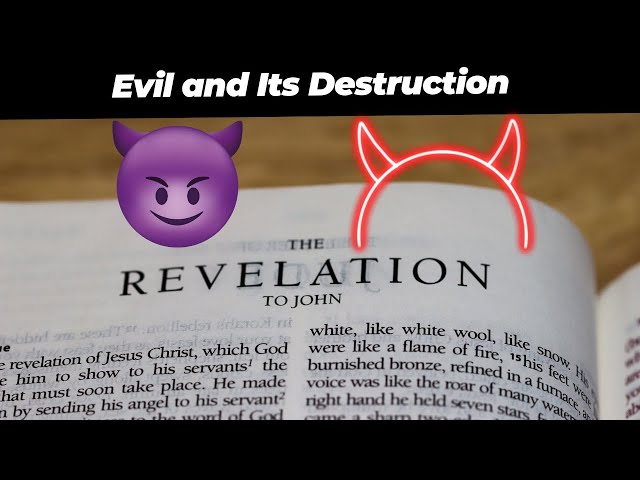
The Book of Revelation: Evil and Its Destruction
384 views · Aug 3, 2024 horoscopochino.co
The Book of Revelation: Evil and Its Destruction The Book of Revelation, the final book of the New Testament, is a rich and complex text filled with symbolism and prophecy. It offers a vision of the ultimate triumph of good over evil and the establishment of God's eternal kingdom. One of the central themes of Revelation is the destruction of evil, depicted through vivid and often terrifying imagery. Revelation was written by John, traditionally believed to be John the Apostle, while he was exiled on the island of Patmos. The book addresses the persecution faced by early Christians and offers hope through the promise of divine justice. The narrative is structured around a series of visions that John experiences, each revealing different aspects of the cosmic battle between good and evil. The imagery of Revelation is both striking and intricate. The vision begins with messages to the seven churches in Asia Minor, addressing their spiritual state and urging repentance. Following these letters, John is taken up into heaven, where he witnesses the throne of God, surrounded by heavenly beings. It is here that the Lamb, identified as Jesus Christ, takes a scroll sealed with seven seals, each of which, when broken, unleashes events that bring about the end of the world. The breaking of the seals leads to the release of the Four Horsemen of the Apocalypse, symbolizing conquest, war, famine, and death. These figures represent the initial phases of the world's tribulation, marking the beginning of the end times. The subsequent judgments, including the blowing of the seven trumpets and the pouring out of the seven bowls of God's wrath, depict a series of catastrophic events that further devastate the earth and its inhabitants. One of the most significant aspects of Revelation is the portrayal of evil forces. The dragon, identified as Satan, and his beasts are central antagonists. The first beast, rising from the sea, symbolizes a powerful and blasphemous empire, while the second beast, coming from the earth, represents false prophets and deceptive religious authorities. These beasts work to deceive humanity and lead them away from God, culminating in widespread apostasy and persecution of the faithful. The turning point in the battle between good and evil comes with the appearance of the Lamb and the heavenly armies. In Revelation 19, Christ, depicted as a rider on a white horse, leads the armies of heaven to defeat the beast and the false prophet. They are cast into the lake of fire, symbolizing their ultimate and eternal destruction. Following this, Satan is bound for a thousand years, during which Christ reigns with his saints in a period of peace known as the Millennium. The final confrontation occurs after the Millennium when Satan is released for a short time. He gathers nations for a final assault on God's people, but fire from heaven consumes them. Satan is then thrown into the lake of fire, where he joins the beast and the false prophet, marking the definitive end of evil. Revelation concludes with a vision of a new heaven and a new earth, where God dwells with humanity. The New Jerusalem descends from heaven, a city of unparalleled beauty and purity, symbolizing the eternal presence of God with His people. In this renewed creation, there is no more death, mourning, crying, or pain, for the former things have passed away. The Book of Revelation offers a powerful message of hope and assurance to believers, affirming that despite the presence of evil and suffering in the world, God's victory is certain. The ultimate destruction of evil and the establishment of God's kingdom serve as a reminder of His justice and faithfulness. For more insights and detailed explanations, you can watch related videos in the associated playlist or the recommended video in the description of the video you just watched. also Watch The Book of Revelation: Chapter 1 Unveiled https://youtu.be/EKdFyFOcPCI
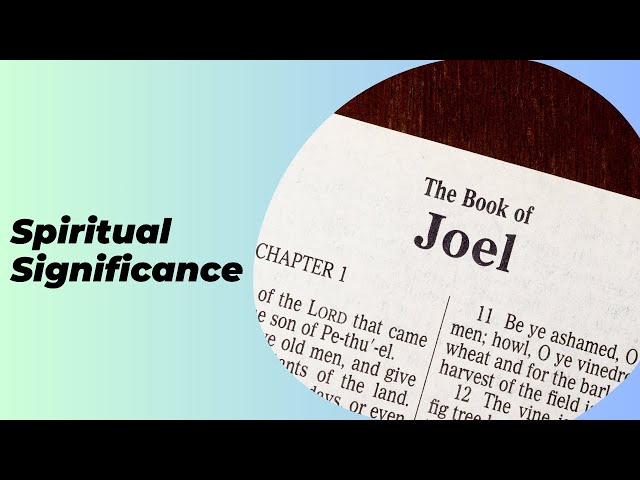
The Spiritual Significance of the Book of Joel: An Explorati...
2K views · Jul 18, 2024 horoscopochino.co
The Spiritual Significance of the Book of Joel: An Exploration The Book of Joel, a brief but profound book in the Old Testament, holds significant spiritual meaning for believers. This prophetic text, traditionally attributed to the prophet Joel, speaks to the themes of repentance, divine judgment, and the promise of restoration. Its messages are deeply interwoven with spiritual insights that continue to resonate with spiritually inclined individuals. Joel's prophecies unfold in three key sections: the locust plague, the call to repentance, and the promise of divine intervention and restoration. Each section carries profound spiritual implications, urging readers to reflect on their relationship with the divine and the world around them. The initial chapter of Joel describes a devastating locust plague that ravages the land, symbolizing a form of divine judgment. This calamity is not merely a natural disaster but a manifestation of spiritual disobedience and moral decay. The locusts represent the consequences of turning away from spiritual principles and neglecting one's duty to the divine. This vivid imagery serves as a wake-up call, compelling individuals to introspect and acknowledge the repercussions of their actions. The spiritual meaning behind this section lies in the recognition of divine justice. It underscores the idea that spiritual and moral lapses have tangible consequences. This passage invites readers to consider how their actions align with spiritual laws and encourages a return to righteous living. In the subsequent chapters, Joel transitions to a call for repentance. The prophet implores the people to turn back to God with sincere hearts. This call to repentance is not just a ritualistic return but a heartfelt plea for genuine transformation. Joel emphasizes fasting, weeping, and mourning as expressions of true penitence. These acts symbolize the shedding of old ways and the embrace of a renewed spiritual path. The spiritual essence of this call to repentance is profound. It highlights the importance of humility and the willingness to acknowledge one's shortcomings. True repentance, according to Joel, is not merely about external rituals but about an inner change of heart. This section of the book inspires individuals to seek spiritual renewal and to mend their ways, fostering a deeper connection with the divine. The final chapters of Joel bring a message of hope and restoration. After the people repent, God promises to pour out His Spirit upon all flesh. This outpouring signifies a new era of spiritual enlightenment and divine favor. The prophetic vision includes the restoration of the land, abundant blessings, and the renewal of the community. This divine intervention represents the ultimate grace that follows sincere repentance. Spiritually, this promise of restoration is a testament to the boundless mercy of the divine. It reassures believers that no matter how dire their circumstances, genuine repentance and spiritual awakening can lead to renewal and blessings. This message is particularly uplifting for those facing spiritual or personal challenges, offering hope and encouragement for a brighter future. In conclusion, the Book of Joel carries a timeless spiritual message that remains relevant for modern readers. Its themes of divine judgment, the call to repentance, and the promise of restoration offer profound insights into the nature of spiritual growth and divine mercy. For spiritual enthusiasts, Joel's prophecies serve as a guide to introspection, genuine transformation, and the hope of divine grace. Watch more videos like this in the associated playlist or the recommended video in the description of the video you just watched. Also watch: Exploring the Spiritual Meaning of the Infinity Symbol https://youtu.be/YTv9EZZh6nw
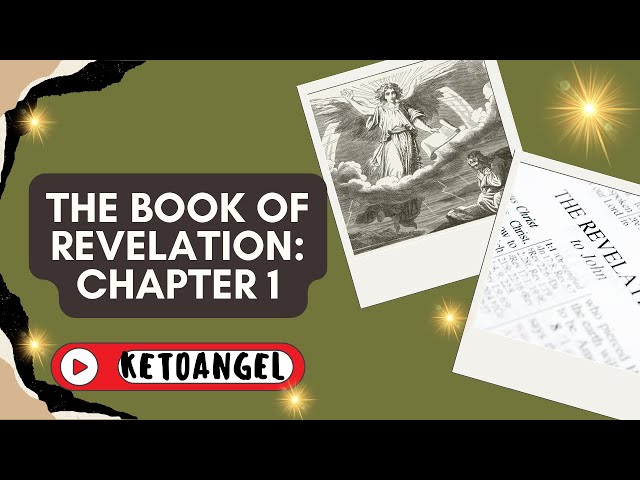
The Book of Revelation: Chapter 1 Unveiled
2K views · May 23, 2024 horoscopochino.co
The Book of Revelation: Chapter 1 Unveiled The Book of Revelation, also known as the Apocalypse of John, is one of the most enigmatic and compelling books of the New Testament. Chapter 1 serves as the prologue, setting the stage for the profound visions and symbolic narratives that follow. Written by John the Apostle during his exile on the island of Patmos, this chapter introduces key themes and figures that are crucial to understanding the entire book. The chapter opens with a declaration of the divine origin and purpose of the revelation. John is explicit that the vision he received is from Jesus Christ, delivered through an angel. This sets the authoritative tone for the entire work, emphasizing that the messages contained within are divinely sanctioned and intended for the edification of the seven churches in Asia Minor. John begins by addressing his readers directly, identifying himself and the source of his vision. He blesses those who read, hear, and keep the words of this prophecy, underscoring the importance of heeding the messages it contains. This blessing is significant as it establishes a covenantal relationship between the reader and the text, suggesting that the proper response to the revelation involves not just intellectual assent but also faithful obedience. The first vision John recounts is that of the glorified Christ. John describes a dramatic scene in which he sees Jesus Christ in a transformed, heavenly state. The description is rich with Old Testament imagery: Christ is depicted with a robe reaching down to his feet and a golden sash around his chest, reminiscent of the high priestly garments. His hair is white like wool, symbolizing purity and eternal wisdom, and his eyes are like blazing fire, indicating his piercing insight and judgment. John's portrayal of Christ is both majestic and awe-inspiring. His feet are like bronze glowing in a furnace, and his voice is like the sound of rushing waters, powerful and overwhelming. In his right hand, he holds seven stars, which represent the angels of the seven churches, and out of his mouth comes a sharp, double-edged sword, symbolizing the penetrating power of his word. His face shines like the sun in all its brilliance, reflecting his divine glory. The sight of the glorified Christ is so overwhelming that John falls at his feet as though dead. This reaction underscores the profound awe and reverence elicited by the vision. However, Christ places his right hand on John, a gesture of comfort and reassurance, and tells him not to be afraid. He identifies himself as the "First and the Last," the "Living One" who was dead but is now alive forever and ever, holding the keys of death and Hades. This self-identification emphasizes Christ's authority over life and death, as well as his eternal nature. Jesus then instructs John to write down everything he has seen, which includes the things that are now and the things that will take place later. This directive highlights the dual focus of Revelation: it addresses both present realities and future events. The symbolic nature of John's vision is clarified when Christ explains the mystery of the seven stars and seven golden lampstands. The stars are the angels of the seven churches, and the lampstands are the seven churches themselves, symbolizing their role as bearers of the light of Christ in the world. Chapter 1 of the Book of Revelation thus serves as a foundational introduction, providing a majestic vision of Christ and establishing the framework for the messages to the seven churches and the apocalyptic visions that follow. The chapter emphasizes the divine authority of the revelation, the importance of faithful obedience, and the awe-inspiring nature of Christ's glorified presence. As such, it prepares the reader for the profound and often challenging revelations that will unfold in the subsequent chapters. For more insights into the Book of Revelation and other biblical studies, be sure to watch the videos in the associated playlist or check out the recommended video in the description. #2024 #book #revelation #revelations #chapter1 #bible
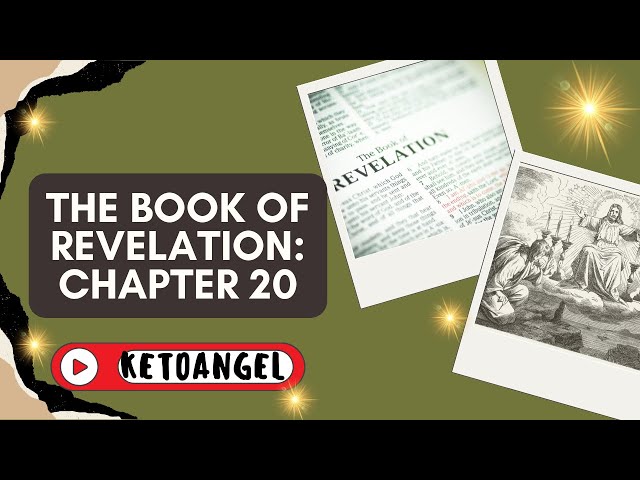
The Book of Revelation: Chapter 20 Explained
5K views · May 23, 2024 horoscopochino.co
The Book of Revelation: Chapter 20 Explained The Book of Revelation, the final book of the New Testament, offers a prophetic vision of the end times, replete with vivid imagery and profound symbolism. Chapter 20 is particularly significant as it delves into the millennium, the final judgment, and the ultimate defeat of Satan. This chapter has been the subject of extensive theological discussion and interpretation, making it a cornerstone for understanding eschatological beliefs within Christianity. Chapter 20 begins with the binding of Satan. An angel descends from heaven, holding the key to the Abyss and a great chain. The angel seizes the dragon, identified as the ancient serpent, who is the devil or Satan, and binds him for a thousand years. This act of binding signifies a period during which Satan's influence over the earth is drastically reduced, allowing for a time of peace and righteousness. During these thousand years, referred to as the millennium, Christ reigns with his saints. Those who were martyred for their testimony of Jesus and for the word of God are resurrected and reign with Christ. This is known as the first resurrection. The rest of the dead, however, do not come to life until the thousand years are completed. The concept of the millennium has been interpreted in various ways, with some viewing it as a literal thousand-year reign of Christ on earth, while others see it as a symbolic representation of a long period of righteousness. After the millennium, Satan is released from his prison and will deceive the nations once more. He gathers them for battle against the saints and the beloved city. This final confrontation, often referred to as the Battle of Gog and Magog, results in the ultimate defeat of Satan. Fire comes down from heaven and devours the armies of Satan, and he is thrown into the lake of fire and brimstone, where the beast and the false prophet are. This marks the end of Satan's influence and his eternal punishment. Following this, the final judgment occurs. John describes a great white throne and Him who sits on it, from whose presence the earth and heaven flee away. All the dead, great and small, stand before the throne. Books are opened, including the book of life, and the dead are judged according to their works recorded in the books. This scene underscores the belief in divine justice, where every individual is held accountable for their actions. The chapter concludes with a stark image of the lake of fire, described as the second death. Anyone whose name is not found written in the book of life is cast into the lake of fire. This symbolizes the ultimate separation from God and the finality of judgment for the wicked. Revelation 20 provides a comprehensive overview of the events leading to the ultimate triumph of good over evil. It offers hope to believers, assuring them of Christ's victorious reign and the eventual eradication of all forms of evil. The vivid imagery and profound messages within this chapter have made it a central focus for eschatological studies and a source of inspiration for Christians awaiting the fulfillment of these prophetic visions. For those interested in exploring more about the profound and complex themes within the Book of Revelation, we invite you to watch more videos in the associated playlist or the recommended video in the description. #2024 #bible #bibleapologeticsseries #books #book #revelation #revelations #chapter20

The Book of Revelation: Unveiling the Destruction of Evil
256 views · May 20, 2024 horoscopochino.co
The Book of Revelation: Unveiling the Destruction of Evil In the enchanting tapestry of the Book of Revelation, a breathtaking tale of good versus evil unfolds—a narrative where the forces of light clash with the shadows of darkness. As a devoted Bible enthusiast, I embark on a journey to explore how the book reveals the ultimate destruction of evil. The Book of Revelation, penned by John, a visionary apostle, is the final book of the New Testament. It serves as a captivating blend of vivid imagery, symbolic language, and profound spiritual truths. At the heart of the book lies a resounding message of hope and assurance for believers amidst trials and tribulations. One of the central themes of the Book of Revelation is the impending destruction of evil. The forces of darkness, personified by Satan and his followers, are depicted as waging war against God and His people. Yet, the book offers a glimpse of the ultimate triumph of good over evil, where the forces of light will prevail, and evil will be utterly vanquished. The destruction of evil in the Book of Revelation is portrayed through various symbolic events. One prominent symbol is the seven seals, each of which represents a significant moment in history. The opening of each seal reveals plagues, judgments, and cataclysmic events that culminate in the downfall of oppressive systems and the purification of the earth. Another powerful image is the battle of Armageddon, where the forces of good and evil engage in a decisive confrontation. This epic battle symbolizes the final clash between light and darkness, leading to the ultimate defeat of Satan and his followers. The destruction of evil is portrayed as a cosmic event, shaking the foundations of the universe and bringing about the establishment of God's eternal kingdom. The Book of Revelation also highlights the role of believers in the destruction of evil. Through their faith, prayers, and unwavering trust in God, believers contribute to the ultimate triumph of good. The book emphasizes the importance of remaining steadfast in faith, even in the face of adversity, as it is through faithfulness that believers become part of the victorious army of light. The destruction of evil in the Book of Revelation is a profound and awe-inspiring message that offers comfort, hope, and assurance to believers. It serves as a reminder that no matter how daunting the forces of darkness may seem, the ultimate victory belongs to God. As we navigate the challenges of life, the Book of Revelation provides a beacon of light, reminding us that good will ultimately prevail, and evil will be eternally vanquished. If you're captivated by the mysteries of the Book of Revelation, I invite you to delve deeper into its wonders. Join me on an exhilarating journey as we explore more captivating insights and uncover the hidden treasures of this extraordinary biblical text. Also watch: Who is the red dragon from the book of revelation: A Symbol of Cosmic Evil https://youtu.be/ZZl2ETza0-U
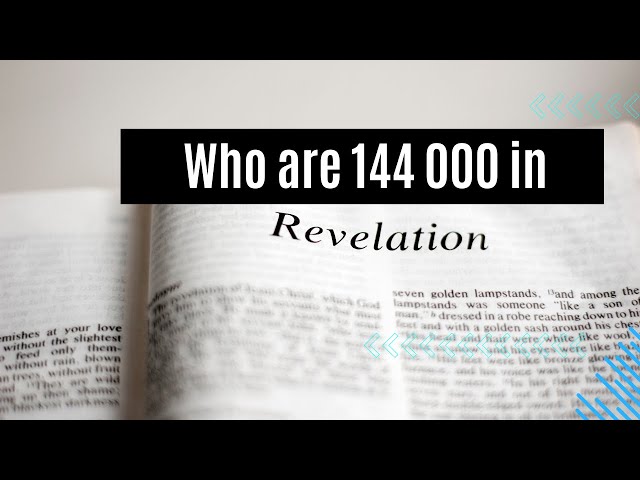
Who are the 144 000 in the book of revelation? Video
969 views · May 20, 2024 horoscopochino.co
Who are the 144 000 in the book of revelation? Video. If you've ever read those captivating passages and wondered who on earth (or in Heaven) the 144,000 are, you're definitely not alone. This enigmatic group has sparked intense fascination and debate within the Christian community for centuries.
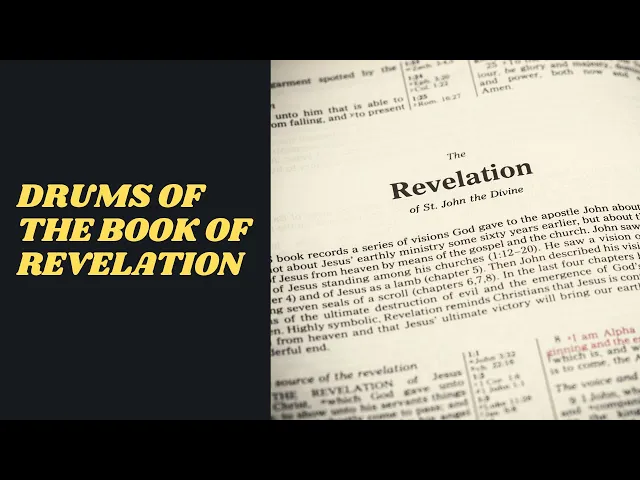
The Drums of the Book of Revelation: Video
472 views · May 20, 2024 horoscopochino.co
The Drums of the Book of Revelation: Video. These drums, both symbolic and literal, serve as powerful harbingers of divine judgment and the unfolding of God's plan. Let's explore the significance of the drums in this captivating biblical text. The Heavenly Drummer:
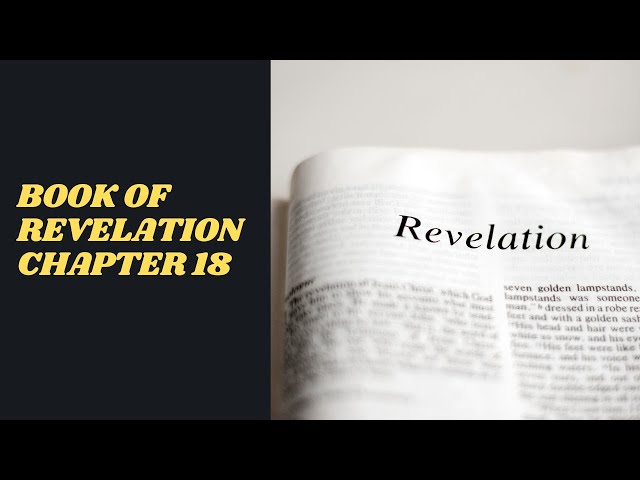
The book of revelation chapter 18: Video.
2K views · May 20, 2024 horoscopochino.co
The book of revelation chapter 18: The Fall of Babylon.Video In the profound and enigmatic book of Revelation, chapter 18 stands as a pivotal passage, offering a glimpse into the dramatic downfall of a symbolic city known as Babylon.

Margaret Mitchell: Video blog
5K views · Mar 11, 2024 pcweb.info
Margaret Mitchell: Video blog. Her captivating storytelling and vivid portrayal of the American Civil War have captivated readers worldwide. This article delves into the life and literary legacy of Margaret Mitchell, shedding light on her tumultuous personal journey, her writing process, and the enduring appeal of her masterpiece.

Margaret Mitchell Quotes: video
5K views · Mar 8, 2024 pcweb.info
Margaret Mitchell Quotes: video. Let's explore some of the most profound and thought-provoking quotes from Margaret Mitchell. “The world is full of people who have a great deal to say and nothing to contribute.” This quote reminds us that talking and contributing are two different things. Many people may have strong opinions or be vocal about various issues, but their words may not provide any real value or solutions.

World Book and Copyright Day: Video blog
8K views · Mar 8, 2024 horoscopochino.co
World Book and Copyright Day: Video blog. This day is a reminder of the power of books to educate, entertain, and inspire, and the role that copyright plays in safeguarding the rights of authors and creators.

World Book and Copyright Day: Celebrating Literature and Int...
2K views · Feb 27, 2024 pcweb.info
Join us as we delve into the significance of World Book and Copyright Day, exploring its history, purpose, and the importance of literature and intellectual property in our society.

Gone with the Wind: book summary
85K views · Nov 28, 2023 pcweb.info
Gone with the Wind: Book Summary "Gone with the Wind" is a monumental novel written by Margaret Mitchell, published in 1936, that captures the American Civil War and Reconstruction era from a Southern perspective. It is an epic saga that follows the life of Scarlett O'Hara, a strong and determined woman, through the turbulent historical events that marked the history of the United States. The story begins on Tara's southern plantation, where Scarlett, a spoiled and passionate young woman, fights for her unrequited love for Ashley Wilkes and defies social conventions. The arrival of war and the devastation it brings radically changes Scarlett's life, transforming her into a brave and resilient woman. The novel follows the course of the war and its impact on Scarlett's life, showing her struggle to survive, maintain her home, and adapt to a new reality. As she faces loss, hunger, and uncertainty, Scarlett fights to preserve her identity and her place in an ever-changing world. The relationship between Scarlett and Rhett Butler, a charismatic and defiant man, becomes a central axis of the story. Throughout the novel, the complexity of her feelings and the dynamics of a relationship marked by conflict and passion are explored. Mitchell's narrative is infused with detailed and vivid descriptions of life in the South at the time, as well as the intensity of the characters' personal conflicts and dilemmas. The author portrays the complexity of southern society and racial tensions in that historical context, although the novel has been criticized for its idealized and romantic vision of the past. "Gone with the Wind" is a long, character-rich novel that addresses universal themes such as love, loss, resistance and change. Through the life of Scarlett O'Hara, Mitchell presents an epic portrait of a defining era in American history, leaving a lasting mark on literature and becoming a timeless literary classic. #gonewiththewind #books

Book of revelation chapter 7 verses 16 and 17: video blog
17K views · Oct 22, 2023 horoscopochino.co
Book of revelation chapter 7 verses 16 and 17: video blog. Within this intricate tapestry of visions, symbols, and prophecies, Chapter 7 provides a unique oasis of comfort, particularly verses 16 and 17, which read: "They shall hunger no more, neither thirst anymore; the sun shall not strike them, nor any scorching heat. For the Lamb in the midst of the throne will be their shepherd, and he will guide them to springs of living water, and God will wipe away every tear from their eyes."

Unveiling the Intriguing Contrasts: Indecent Proposal Book v...
4K views · Oct 8, 2023 pcweb.info
In this captivating video, we delve into the intriguing world of "Indecent Proposal" as we compare the book and film adaptations. Join us as we explore the key differences in plot, characters, and themes that make each version unique. Discover the twists and turns that will leave you on the edge of your seat. Don't miss out on this exciting analysis! Watch now to uncover the secrets behind this timeless story.
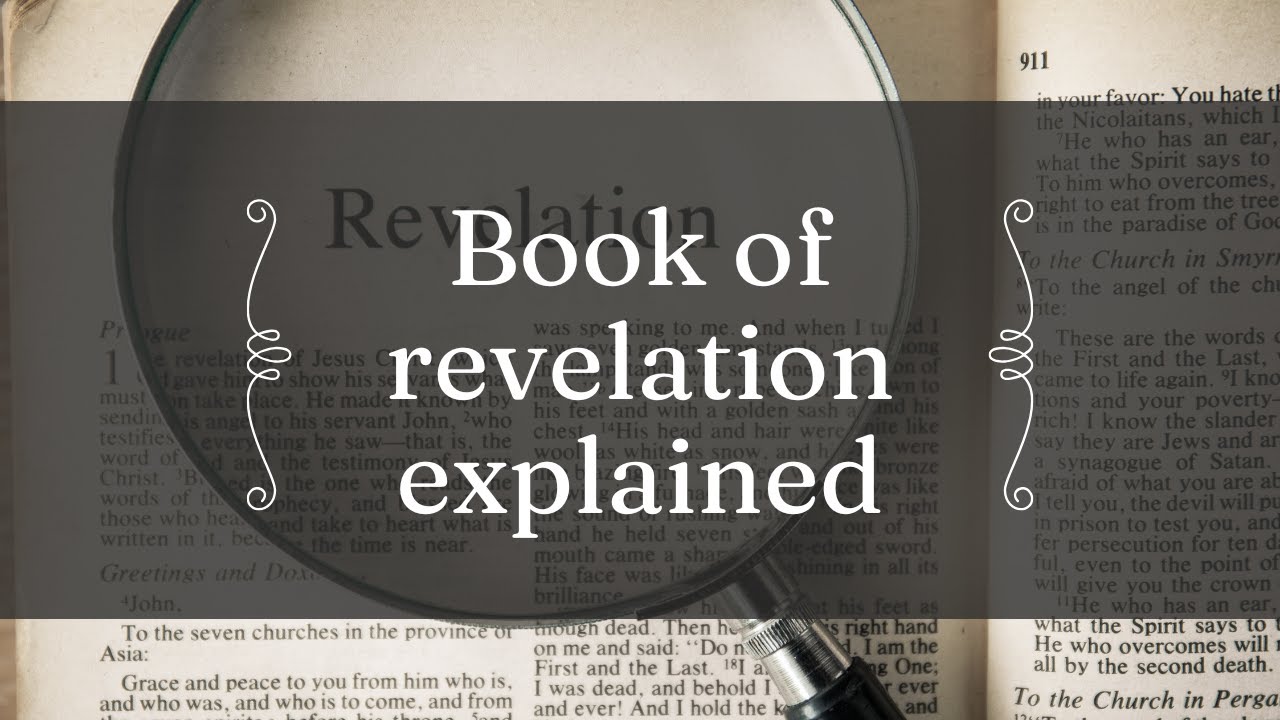
The book of revelation explained video blog
3K views · Sep 5, 2023 horoscopochino.co
The book of revelation explained video blog Revelation presents a visionary account of the apostle John's experiences on the island of Patmos, where he receives a series of revelations from Jesus Christ himself. The book is rich with theological themes and its meaning is subject to various interpretations.
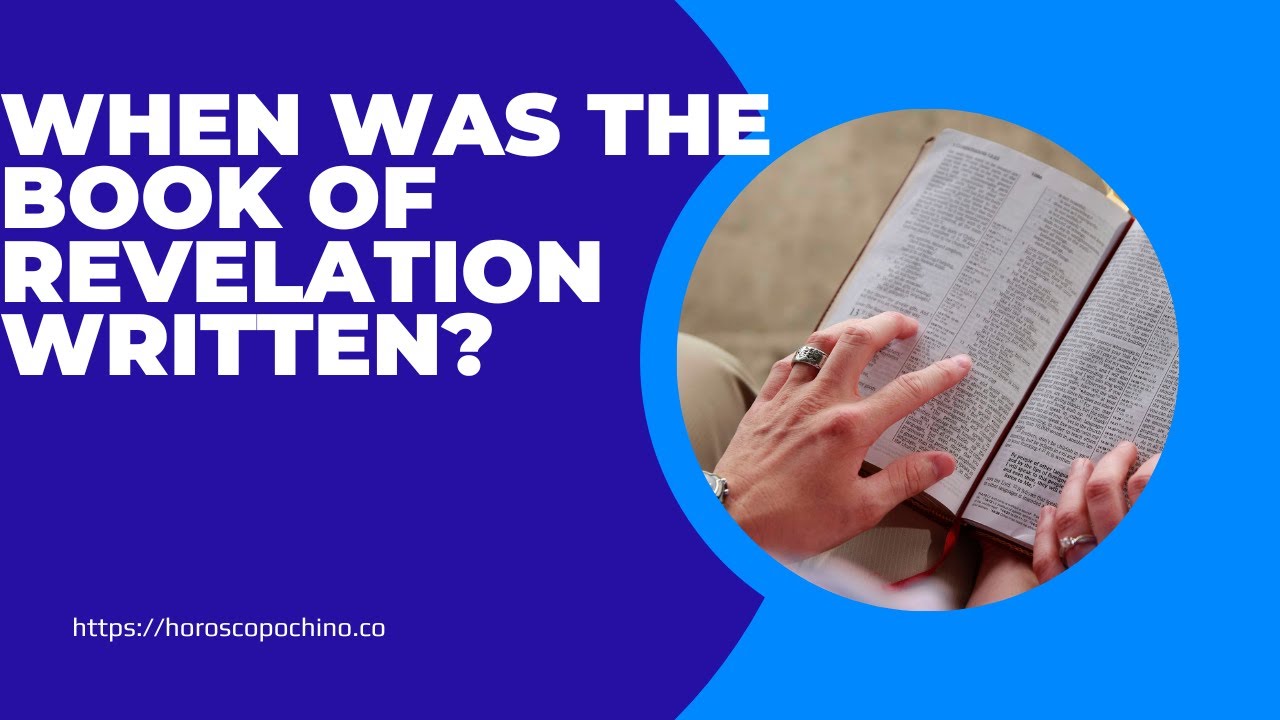
When was the book of revelation written? Video blog
7K views · Aug 21, 2023 horoscopochino.co
When was the book of revelation written? Video blog Most scholars agree that Revelation was written during a period of persecution and turmoil in the early Church, in the context of the Roman Empire. The mention of seven churches in the early portions of the book (Rev. 1:11) indicates a focus on Christian communities facing challenges and adversity in Asia Minor. The historical and symbolic details within the text have led to proposed dates ranging from the reign of Emperor Nero to that of Domitian.
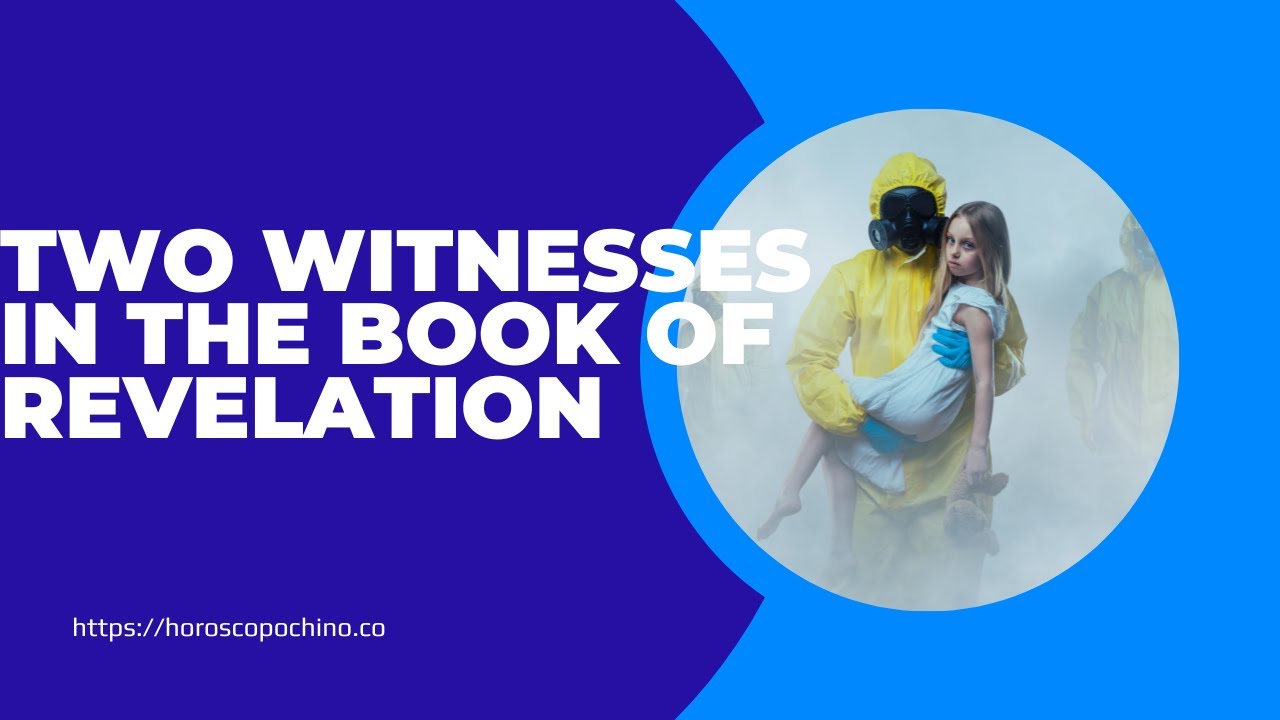
Who are the two witnesses in the book of revelation video bl...
22K views · Aug 21, 2023 horoscopochino.co
Who are the two witnesses in the book of revelation video blog The Figures of the Two Witnesses The Two Witnesses are presented in Revelation as two anointed individuals, invested with divine powers to proclaim God's message and perform amazing wonders during a period of 1,260 days, which is associated with three and a half years of tribulation. They are often interpreted as representative figures of the Law and the Prophets, embodying the totality of divine witness in human history.

What is the Zabur? The Book of Psalms in Islam
10K views · Aug 6, 2023 pcweb.info
The Zabur is the Islamic name for the Book of Psalms, a collection of ancient Hebrew poetry and songs. Learn more about the Zabur, who uses it, its contents, and its key themes.